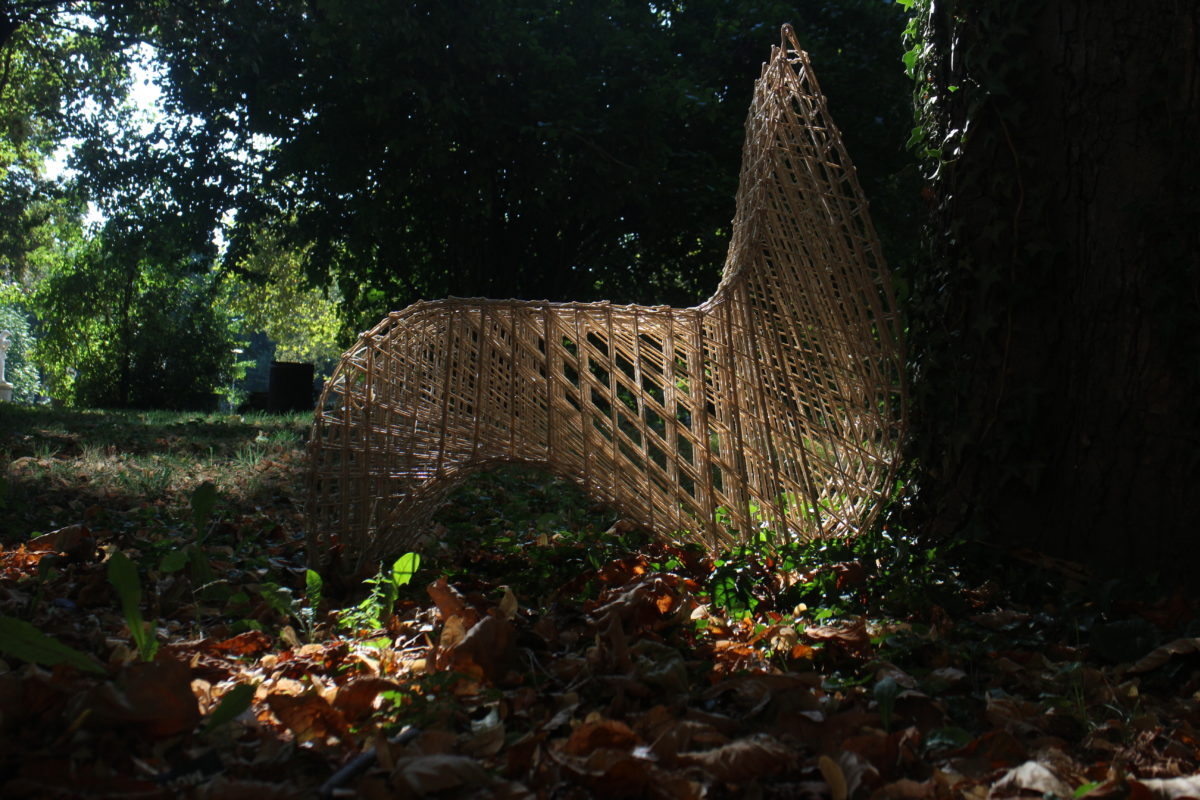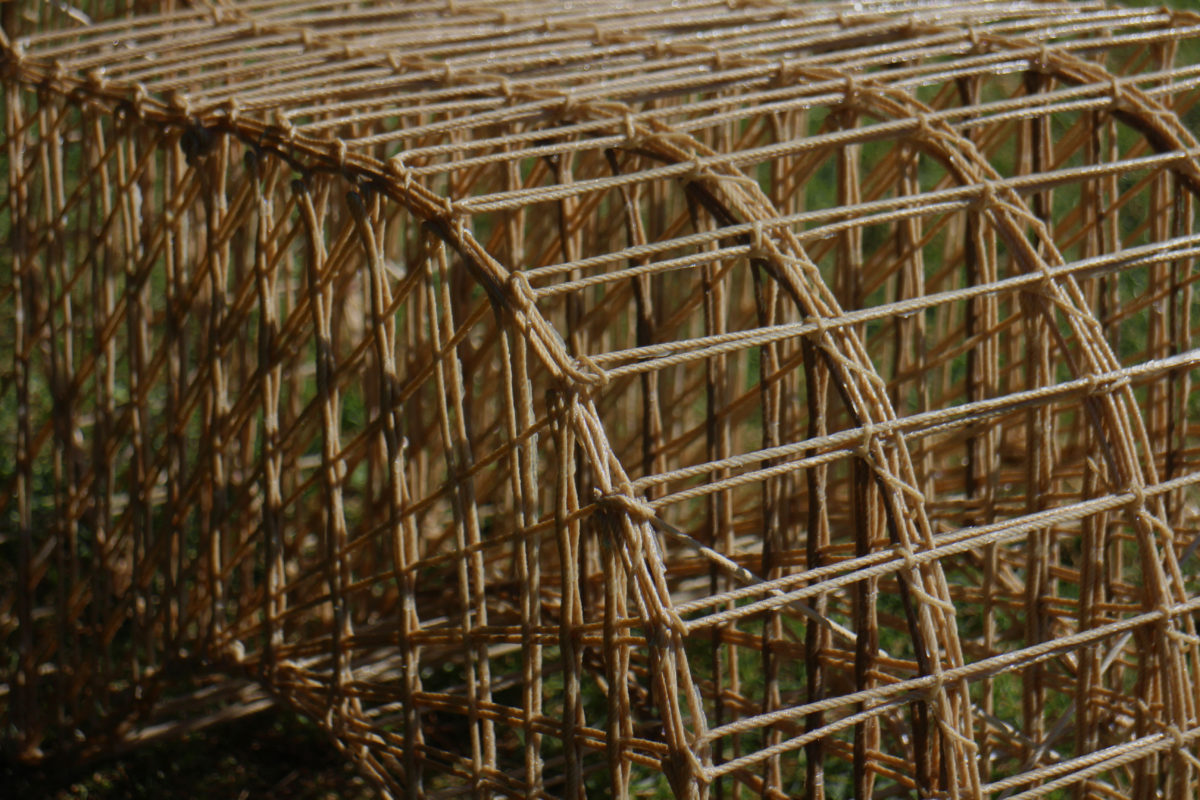Hemp Chair
The construction of the first chair provided experience in the full transition from digital representation to physical artifact, including all the intricacies involved in the process, and provided knowledge of how to manipulate the directionality of fibers to obtain geometries that contributed to structural performance, thus underlying the relationship between (fibrous) material and structure. However, what lacked in the construction of the first chair was the degree of prototyping. If more prototypinghad taken place, perhaps simple mistakes, especially the heating of the unrestrained structure, could have been avoided. In addition, had more prototyping occurred, the consequences of each step of winding could have been identified and unsuitable steps and consequences circumvented. So, while these lessons were not able to be incorporated in the first chair, they directly fed into the construction strategies of the second chair. Thus, the first chair can be viewed as a 1:1 prototype that was instrumental to the success of the second chair. Themes of the experience of the second chair are the importance of simplified fabrication and ensuring optimal fiber-fiber interaction. The extensive use of winding planar elements allowed the fibers to be easily laid with a high degree of tension along their axis, which is the conformation in which they are designed to take loads, that resulted in good compressive properties when cured. The use of zip ties and weights were crucial in ensuring satisfactory fiber-fiber interaction to avoid delamination and provide thickness, also contributing to compressive properties. The ease of assembly is also another highlight of the second chair considering the fact that occurs through simple weaving and application of resin. The culmination of these construction strategies and this process is a chair that can be made from an incredibly minimal amount of basic materials and tools — spools of natural fiber, resin, bolts, zip ties, a surface on which to wind, and a pair of hands — that can bear, so far as been tested, at least 23 times its own weight. Thus, in response to the initial question of this investigation: Are natural fiber composites combined with coreless filament winding techniques effective for the goal of building a functional, environmentally-friendly chair? the answer is definitely yes. This chair has been a proof of concept that has integrated the topics of structural design, fibrous morphologies, form-finding, coreless filament winding, and biocomposites as never before into the construction of a single usable object.
Student design project by Sachin Gupta and Andre Kauffman, University of Stuttgart.
Design Studio: Material and Structure, SS 16


